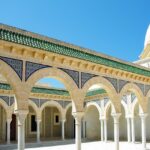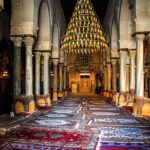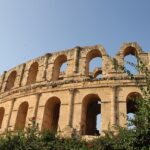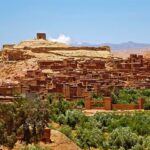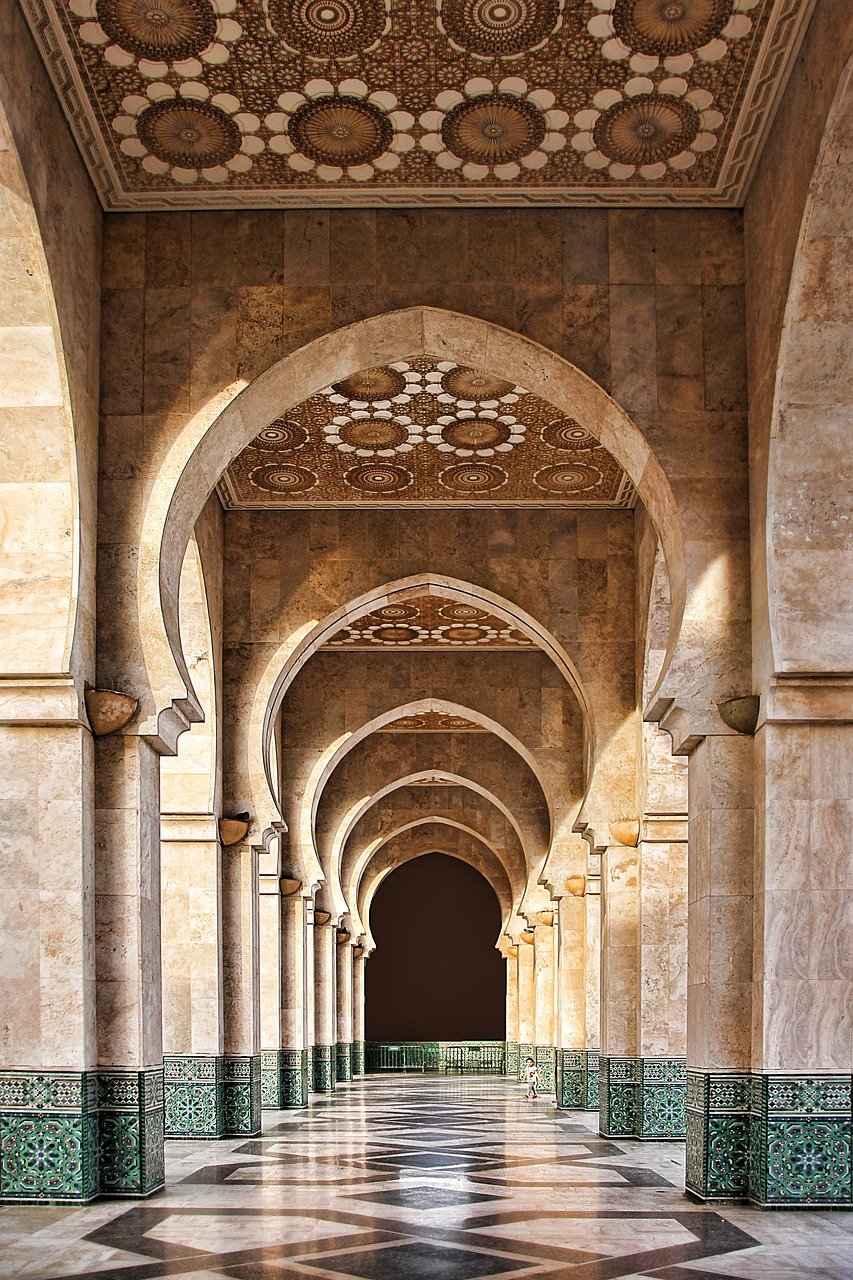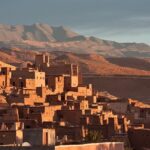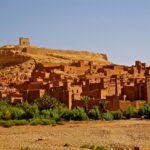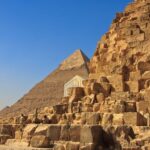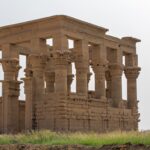North African countries serve as a great reminder of African excellence. As many sub-Saharan African countries had an oral way of documenting their cultural practices, a lot of it was wiped out during the transatlantic slave trade. North African countries such as Egypt influenced and have shaped the world we live in today. For example, did you know that the 365-day calendar was created by the ancient Egyptians.
3.Tunisia
Tunisia is a beautiful culture-rich country lying-in north-east Africa. Its historical ruminants are a powerful reminder of the strength of the country.
Around 1100BC, the Phoenicians ruled Tunisia. They built the Carthage, which was their established capital. Carthage grew to become the main power in the western.
Carthage was one of the most powerful cities of the ancient world and spawned the powerful Carthaginian Empire dominated up until the 1st century. Tunisia was concord by the Romans after they won the Punic War. After that, Tunisia was called Ifrīqiyyah in the early centuries of the Islamic period. Up until the influence of the Berbers.
With 8 UNESCO Heritage sites, historic landmarks, and cultural medinas, Tunisia is a great country to explore. To further understand Tunisia’s Rich history, here are my top 5 sites;
Punic Town
Punic town is in the northeastern region of Tunisia. This site though discovered in 1952 dates back to the 3rd century BC! It is a great way to understand the true enormity of this once great city.
Amphitheatre of El Jem
These are the largest colosseums in North Africa dating back to the 3rd century, These magnificent ruins really put the magnitude of the Roman empire into perspective.
Thugga
This UNESCO World Heritage site was the capital of an important state during the Roman reign. With over 17 centuries worth of history in this site’s ruins, this place is an amazing step back into time.
Zaytuna mosque
Zaytuna mosque is the oldest and greatest mosque in Tunisia with many Muslim scholars graduating from university over a thousand years ago.
Carthage
The Carthage is a collection of ancient ruins which are the remnants of a once-powerful city destroyed by the Romans. This UNESCO World Heritage site is a must-see piece of history and culture lovers.
How will you get to these sites?
Within the Capital Tunis, yellow taxis are easily available and cheap to get around the capital and to Carthage. Taxis are metered so you won’t have to worry about haggling. Accommodation is also relatively cheap depending on the season you go. The summer season can usually be more expensive. Budget accommodations can range from $20 – $90 per night.
See Tunisia Below
2. Morocco
Morocco is an excellent example of African cultural preservation with some of the world’s best architecture, its history and culture are unlike any other. Morocco is home to the great Moorish empire.
The Moroccan empire was one of the most important empires in the Mediterranean region, playing many influential roles in both the history of Europe and Western Africa. The empire began in the early 7th century and was officially abolished in the late 20th century.
Islam was introduced to Morocco after the war between the Arabsa and the Berbers also known as Amazighs. Amazighs mostly accepted Islam as their new religion, their territories became part of the Omayyad Caliphate. They spread Islam mainly in the Iberian Peninsula; all over north Africa to Europe and Asia.
Some great cultural sites in Morocco are;
Fez
Fez is Morocco’s former capital and its cultural hub. If you’re ever in Fez you must visit the Fez Medina which is the oldest neighborhood in Fez (founded in 859) and also protected as a World Heritage Site.
Fun fact: Fez, is also home to the oldest university in the world! Al-Qarawiyyin was founded in 859AD by a woman named Fatima al Fihriand and is still running today!
Tangier
Tangier is the oldest city in Morocco, is a hub for cultural lovers. With must-visit places like; Dar el Makkhzen (17th-century royal palace), Kasbah Museum, Hercules Caves, and Park Rmilat. A mixture of the past and the present this city is sure not to disappoint.
This city is now Morocco’s capital and is home to Kasbah des Oudaias. This is one of the town’s most historic quarters and part of the World Heritage Sites. This historical site was constructed in the 12th century, the kasbah includes an old palace and mosque, small blue homes. A beach and more!
Marrakesh is probably one of the more popular tourist destinations and is home to some amazing architecture in the country. Some must-visit places are;
Jemaa el-Fnaa Square
This square is located in the Marrakesh Medina. It is a UNESCO World Heritage site. This square has been used since 1062 and it feels like you’re stepping back in time with narrow windy streets, live entertainment in the main square, and a bustling atmosphere. It is definitely an experience.
Saadian Tombs
Saadian Tombs was constructed in the 16th century. It is home to around 60 members of royal sultans.
El Badi Palace
This palace is an interesting cultural experience. The palace was crafted with some of the most expensive materials of the period. The palace’s construction is in gold and onyx, with marble colonnades and crystal embellishments.
Transport is easily accessible in each city and between each city. Trains and coaches between each city are cheap, safe, and frequent. Taxis are usually metered so you won’t have to worry about haggling (sometimes). In Casablanca and Marrakesh, this haggling with taxi drivers may be needed, and be mindful of taxis! (Make sure they are legitimate) Accommodation is also relatively cheap depending on the season you go. The summer season can usually be more expensive. Budget accommodations can range from $10 – $90 per night.
See Morocco Below
1. Egypt
Now we can’t talk about Africa without acknowledging this giant influential country. Egyptian Civilisation was in a league of its own being home to one of the oldest seven ancient wonders which lasted over 3000, from 3150BC to 30BC.
Egyptian inventions have shaped the world we live in to date. From soap, paper and ink, wigs and makeup, calendars, tables, toothpaste, medicine, the police system, and more! This country’s history is rich in African excellence.
Egypt’s history has traditionally been divided into 30 dynasties and seven main sectors: The early dynastic period, old kingdom, Second Intermediate Period, the middle kingdom, Second Intermediate Period, the new kingdom Third Intermediate & Late Period
Accounts of ancient Egyptian history were preserved by ancient Greek writers and, until the deciphering of hieroglyphic writing in the 19th century, was one of the few historical accounts that scholars could read. Egyptian civilisation was located along the Nile river. The Nile was a source of much of the Ancient Egyptians wealth.
Some of my must-visit places in Egypt are;
Luxor
Luxor is a city in southern-eastern Egypt. It was constructed on the same site of Ancient Thebes, which was the capital of Egypt from approximately 2000 BC onwards.
One of the most notable sites in Luxor is Karnak Temple.
Karnak Temple
Karnak is the biggest ancient religious site in the world. It was built over a period of 2,000 years and includes temples, chapels, and other structures. In the ancient era it was the most important place of worship and today it serves as a large open-air museum. The largest section is the Hypostyle Hall, which is 54,000 square feet and features 134 columns, making it the biggest room of any religious building in the world.
Karnak is the second most visited site in Egypt after the Pyramids of Giza.
The Avenue of the Sphinxes
This special avenue is the ancient route that connects the temples of Karnak and Luxor. It contains over a thousand sphinx statues over a one-and-a-half-mile path. The first sphinxes were built during the reign of Nectanebo in the 4th century BC. The road was renovated by Cleopatra (51-31 BC) and later used by the Romans.
Luxor Temple
Luxor temple is located 1.5miles from Karnak. The temple was built between 1100-1600 BC as a shrine to the gods Amun, Chons, and Mut.
There are 14 huge columns that are 23 meters high and around 10 meters in circumference to honor them. Luxor temple became the place where Egyptian kings were crowned. Later, Alexander the Great built a temple there and the Romans also used the site as their Egyptian headquarters.
The Valley of the kings
Another spectacular ancient site in Luxor is the Valley of the Kings This valley is located on the west bank of the Nile and is the main burial place of Pharaohs from the 16th to the 11th century BC. Inside the tombs are beautifully decorated wall paintings and hieroglyphs and 63 Egyptian mythology-decorated tombs and chambers.
The area was the burial ground of the ancient Pharaohs for 500 years and has been a focus of archaeological exploration since the 18th-century. The most famous discovery was Tutankhamun’s tomb which led to rumors of the Curse of the Pharaohs.
Sultan Hassan Mosque
This mosque is considered to be one of the largest mosques in the world. The Sultan Hassan Mosque stands at nearly 8,000 square meters. It consists of a mosque as well as an educational institution, and it is famous for its innovative-architectural components.
Cairo Egyptian museum
This museum is home to an extensive collection of ancient artifacts. With more than 100,000 items, the museum contains the largest collection of ancient Egyptian relics in the world. It tells the fascinating story of the ancient era through impressive displays of mummies, statues, coins, papyrus, and other artifacts. The most famous item on display is the solid gold mask of Tutankhamun which weighs 11kg.
Giza
Now you can’t go to Egypt without visiting the pyramids of Giza. Located on the outskirts of Cairo. This is the only surviving ancient wonder and is a site to marvel at as archaeologists still can’t tell how these pyramids were built! The pyramids to this day are a resemblance of ancient Egyptian style, genius, and culture.
The largest is the Great Pyramid towering the dessert at over 481 feet. It was built in the 26th-century BC as King Khufu’s tomb. It was the tallest man-made structure on the planet over a 3,800 year period.
The Library of Alexandria
The underground library of Alexandria found the ruins of the Serapeum. The Great Library was constructed in the third century BC and was the most famous library of the ancient world.
Temple of Horus
This temple is located in the vicinity of the Nile in the Temple of Horus in Edfu. This temple is a very well-preserved site and was completed in the Ptolemaic period, between 237 and 57 BC. The temple is dedicated to Horus, the falcon god, who is frequently portrayed in statues and wall decorations around the site. It is also one of the few temples to survive with an intact ceiling.
Abu Simbel
Abu Simbel is a temple complex in the far south of Egypt. The twin temples were carved out of the mountainside in the 13th century BC and dedicated to the great pharaoh Ramesses II and his wife.
The most recognizable feature of both temples is the colossal statues you’ll find at the entrance. The Ramesses II ones reach up to 65 feet.
Transport is easily accessible in each city and between each city. Trains and coaches between each city are cheap, safe, and frequent. Taxis are usually metered so you won’t have to worry about haggling (sometimes). Make sure they are legitimate)
Accommodation is also relatively cheap depending on the season you go. The summer season can usually be more expensive. Budget accommodations can range from $10 – $90 per night.



